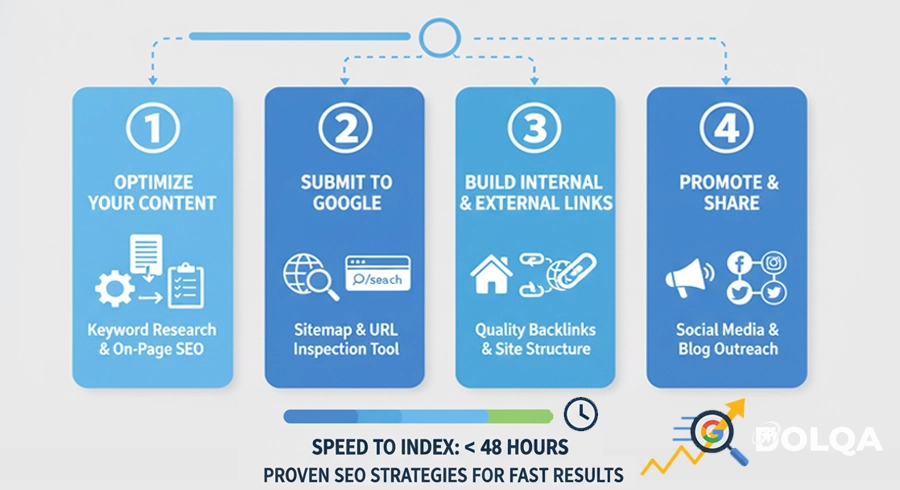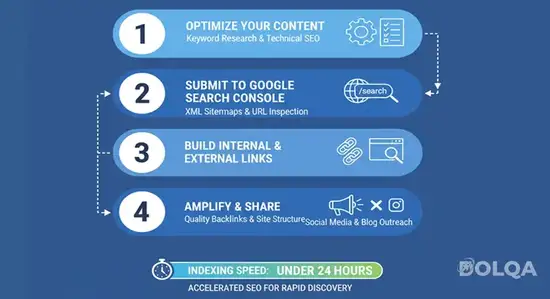Introduction: The Race Against Time in Search Visibility
Picture yourself clicking "publish" on your meticulously crafted article, only to wonder when—or if—Google will actually notice it exists. In the digital landscape, speed matters immensely. Fast indexing isn't just a technical luxury; it's the difference between capturing timely opportunities and watching them slip away to competitors who understand the delicate dance between content creation and search engine recognition.
The truth is, Google doesn't automatically discover your content the moment you publish it. However, with the right approach to SEO and strategic content optimization, you can accelerate this process dramatically—transforming weeks of waiting into mere days.
Understanding Google's Indexing Process
Before we unveil the acceleration techniques, let's demystify what indexing actually means. When Google "indexes" your content, it essentially adds your page to its vast digital library, making it eligible to appear in search results. Think of it as getting your book onto the library shelf—until it's there, no one can find it, no matter how brilliant your writing might be.
Google's crawlers—sophisticated bots that constantly roam the internet—discover, analyze, and categorize content. The challenge? With billions of pages competing for attention, you need to make your content impossible to ignore.
Proven Strategies for Lightning-Fast Indexing
Submit Your Content Directly to Google
The most straightforward path to fast indexing involves Google Search Console, your direct communication channel with the search engine itself. Once you've verified your website ownership:
- Navigate to the URL Inspection tool
- Enter your new article's complete URL
- Click "Request Indexing"
This simple action notifies Google immediately, often resulting in indexing within 24-48 hours rather than the typical weeks of passive waiting.
Optimize Your Site's Technical Foundation
Search visibility begins with technical excellence. Google rewards websites that make crawling effortless:
Essential technical elements include:
- A properly formatted XML sitemap submitted to Google Search Console
- Clean, crawlable site architecture with logical internal linking
- Fast page loading speeds (under 3 seconds)
- Mobile-responsive design that adapts seamlessly across devices
- Secure HTTPS protocol implementation
Leverage the Power of Fresh, High-Quality Content
Google prioritizes websites that consistently publish valuable content. Content optimization isn't about keyword stuffing—it's about creating genuine value that answers real questions. When you establish publishing consistency, Google's crawlers visit more frequently, anticipating your updates.
Focus on:
- Comprehensive coverage of your topic with depth and nuance
- Clear structure using descriptive headings and subheadings
- Natural keyword integration that flows conversationally
- Multimedia elements like images with descriptive alt text
Build Strategic Internal Links
Internal linking serves as your website's roadmap for Google's crawlers. When you publish new content, immediately link to it from existing high-performing pages, particularly your homepage or popular articles. This creates pathways that guide crawlers directly to your fresh content, significantly improving Google ranking potential.
Harness Social Signals and External Mentions
While social media shares don't directly influence rankings, they accelerate discovery. Sharing your content on platforms like LinkedIn, Twitter, or industry-specific forums creates immediate pathways for both human readers and search engine crawlers.
Similarly, if you can secure even a single link from an established website in your niche, you've essentially borrowed their crawling frequency—Google will follow that link and discover your content much faster.

Advanced Techniques for SEO Professionals
The IndexNow Protocol
Consider implementing IndexNow, a relatively new protocol supported by Microsoft Bing and other search engines. While Google hasn't officially adopted it, the protocol allows you to notify multiple search engines simultaneously about content updates, broadening your search visibility beyond Google alone.
Strategic Content Updates
Refreshing existing content with new information, updated statistics, or improved formatting signals to Google that your site remains active and relevant. This maintenance work often triggers recrawling of your entire site, including newly published articles.
Measuring Your Indexing Success
Track your progress through Google Search Console's Coverage report, which shows exactly which pages Google has indexed and highlights any issues preventing indexing. Monitor these metrics weekly to identify patterns and refine your approach.
Remember that fast indexing is just the beginning—ranking well requires ongoing content optimization, building quality backlinks, and continuously improving user experience.
Sources and References
- Google Search Central Documentation - Ask Google to Recrawl Your URLs
- Google Search Console Help Center - Sitemaps Report
- Ahrefs Blog - How to Get Your Website Indexed by Google



Comments (0)
Leave a Comment
No comments yet. Be the first to comment!